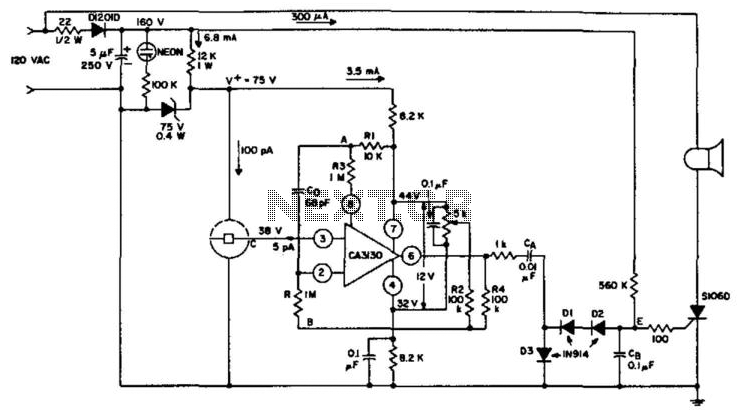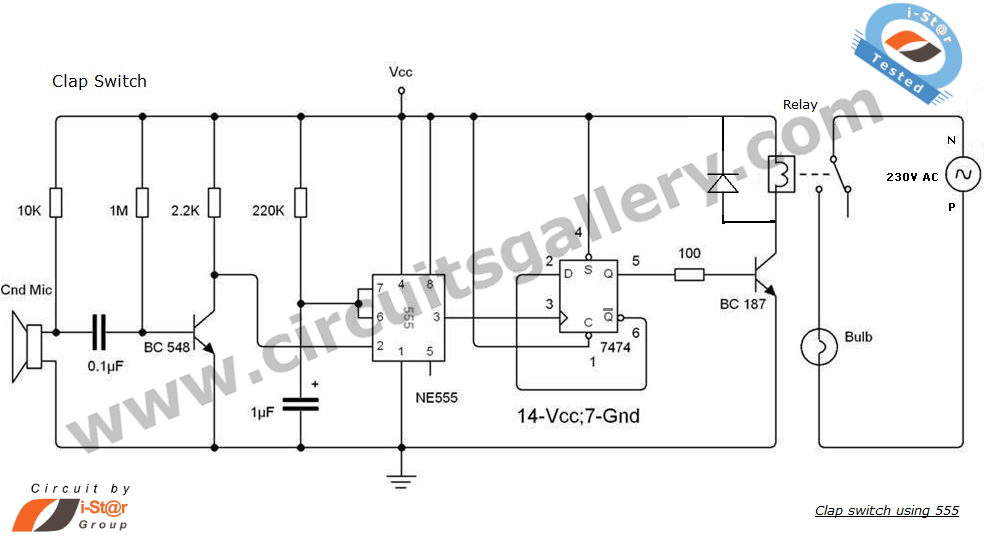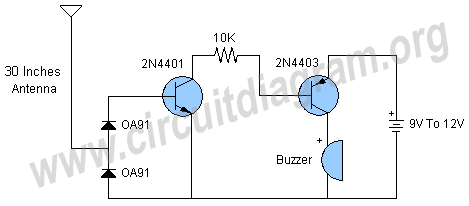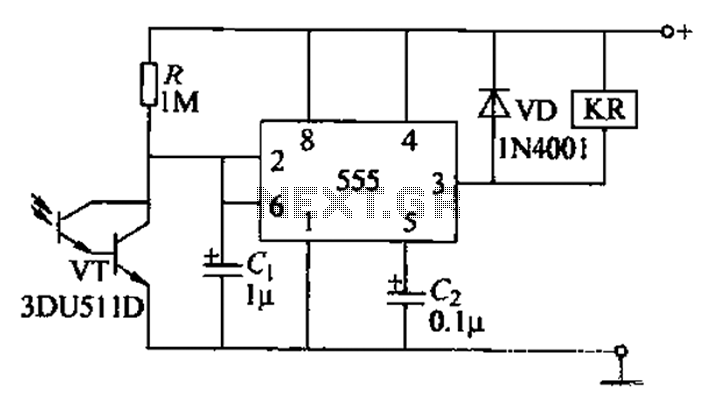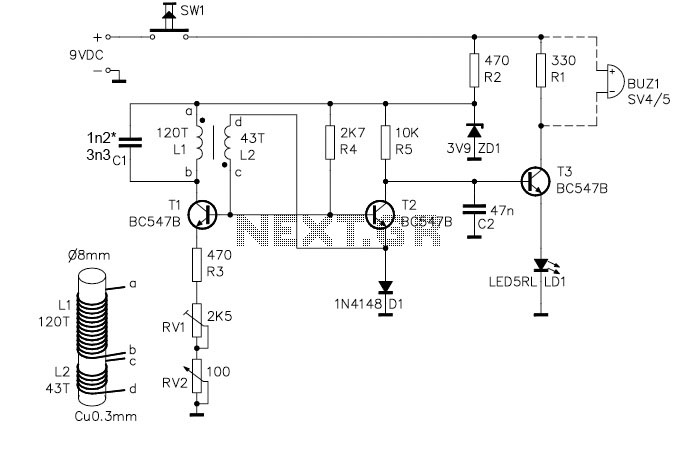
Detector switch circuits
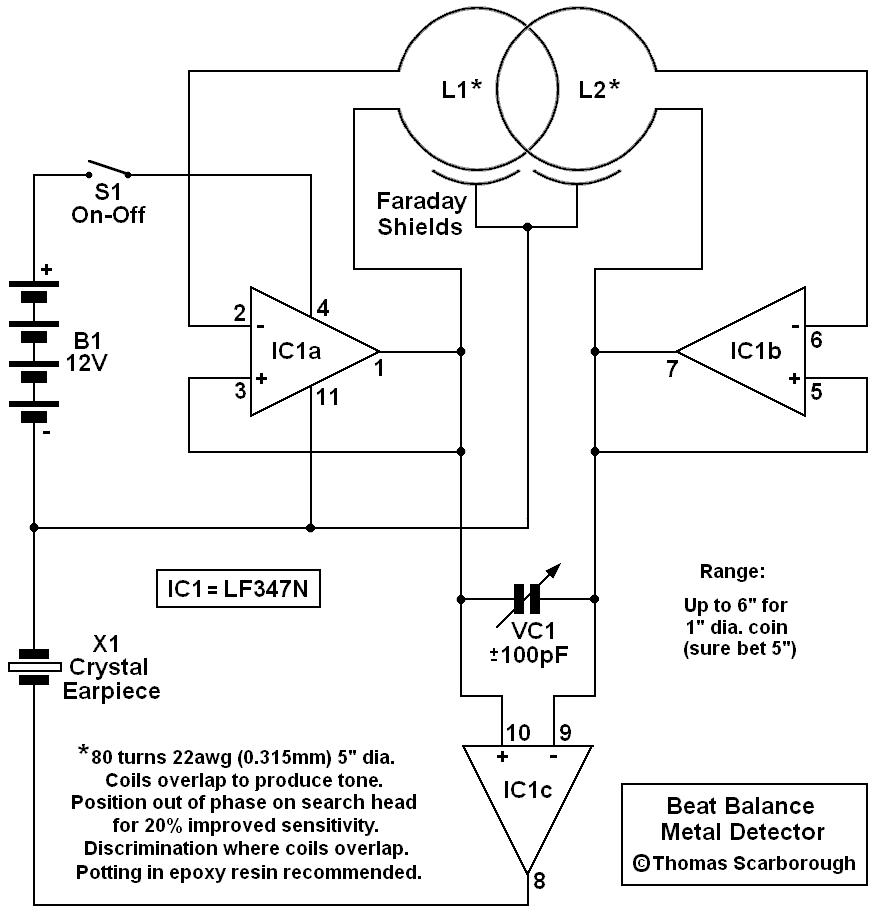
A simple test circuit designed for troubleshooting audio and radio equipment. It can inject a square wave signal rich in harmonics or be used with headphones as an audio tracer. A single-pole double-throw switch is utilized to toggle between injection and tracing modes. The schematic is depicted in trace mode, with the earpiece connected to the collector of the last transistor. Both transistors are configured as emitter followers, delivering high gain. DC blocking is achieved through a 1nF capacitor at the probe end, and the two stages are capacitively coupled. When the switch is flipped to the alternate position (indicated by the blue dot), both transistors operate as an astable square wave generator, producing sufficient harmonics from audio frequencies up to several hundred kilohertz, making it suitable for testing AM radio receivers.
This circuit serves as a versatile tool for audio and radio diagnostics, allowing users to efficiently identify faults in various equipment. The use of a single-pole double-throw switch facilitates easy mode switching between signal injection and audio tracing, enhancing usability. In the tracing mode, the circuit functions as a high-gain audio probe, with the earpiece connected to the collector of the final transistor, which is configured as an emitter follower. This configuration ensures that the output signal maintains a high level of fidelity and strength, crucial for accurate audio analysis.
The inclusion of a 1nF capacitor at the probe end effectively blocks any DC components from the signal, ensuring that only AC signals are processed. This is particularly important in audio applications where DC offsets can lead to distortion or damage to subsequent stages. The capacitive coupling between the two transistor stages allows for seamless signal transfer while maintaining the integrity of the audio frequencies being analyzed.
In the injection mode, when the switch is set to the position marked by the blue dot, the transistors are configured as an astable multivibrator. This configuration generates a square wave output that is rich in harmonics, making it ideal for testing the response of AM radio receivers. The frequency of the generated square wave can be adjusted to cover a wide range of audio frequencies, which is essential for comprehensive testing of radio equipment. The ability to produce signals up to several hundred kilohertz allows for thorough examination of the receiver's performance across various frequency ranges, ensuring that any potential issues can be effectively identified and addressed.
Overall, this simple yet effective circuit design provides essential functionalities for audio and radio equipment troubleshooting, making it a valuable tool for engineers and technicians in the field.A simple test circuit to fault find audio and radio equipment. Can be used to inject a square wave signal, rich in harmonics, or used with headphones as an audio tracer. A single pole double throw sitch is used to switch between inject and trace modes. The diagram is drawn in trace mode, the earpiece being connected to the collector of thelast tra nsistor. Both transistors are wired as emitter followers, providing high gain. DC blocking is provided by the 1n capacitor at the probe end, and the two stages are capacitively coupled. when the switch is thrown the opposite way (to the blue dot) both transistors are wired as an astable square wave generator.
This provides enough harmonics from audio up to several hundred kilohertz and is useful for testing AM radio Receivers. 🔗 External reference
This circuit serves as a versatile tool for audio and radio diagnostics, allowing users to efficiently identify faults in various equipment. The use of a single-pole double-throw switch facilitates easy mode switching between signal injection and audio tracing, enhancing usability. In the tracing mode, the circuit functions as a high-gain audio probe, with the earpiece connected to the collector of the final transistor, which is configured as an emitter follower. This configuration ensures that the output signal maintains a high level of fidelity and strength, crucial for accurate audio analysis.
The inclusion of a 1nF capacitor at the probe end effectively blocks any DC components from the signal, ensuring that only AC signals are processed. This is particularly important in audio applications where DC offsets can lead to distortion or damage to subsequent stages. The capacitive coupling between the two transistor stages allows for seamless signal transfer while maintaining the integrity of the audio frequencies being analyzed.
In the injection mode, when the switch is set to the position marked by the blue dot, the transistors are configured as an astable multivibrator. This configuration generates a square wave output that is rich in harmonics, making it ideal for testing the response of AM radio receivers. The frequency of the generated square wave can be adjusted to cover a wide range of audio frequencies, which is essential for comprehensive testing of radio equipment. The ability to produce signals up to several hundred kilohertz allows for thorough examination of the receiver's performance across various frequency ranges, ensuring that any potential issues can be effectively identified and addressed.
Overall, this simple yet effective circuit design provides essential functionalities for audio and radio equipment troubleshooting, making it a valuable tool for engineers and technicians in the field.A simple test circuit to fault find audio and radio equipment. Can be used to inject a square wave signal, rich in harmonics, or used with headphones as an audio tracer. A single pole double throw sitch is used to switch between inject and trace modes. The diagram is drawn in trace mode, the earpiece being connected to the collector of thelast tra nsistor. Both transistors are wired as emitter followers, providing high gain. DC blocking is provided by the 1n capacitor at the probe end, and the two stages are capacitively coupled. when the switch is thrown the opposite way (to the blue dot) both transistors are wired as an astable square wave generator.
This provides enough harmonics from audio up to several hundred kilohertz and is useful for testing AM radio Receivers. 🔗 External reference
